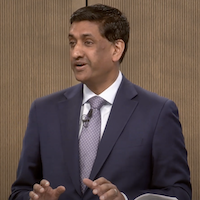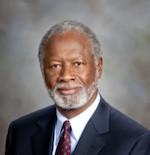
As the founder and CEO of Blacks in Green, Naomi Davis has always focused on developing a whole-system approach to empowering her community of West Woodlawn on Chicago’s South Side.
And with the award of a five-year, $10 million grant from the U.S. Environmental Protection Agency, Blacks in Green is positioned to extend and expand its community-focused approach to sustainability and climate resilience throughout the Midwest.
“Only a whole-system solution can transform the whole-system problem common to Black communities everywhere,” Davis said. “We are about — in our core founding vision and mission — self-sustaining Black communities everywhere. And the mission being to reinvent the walk to work, walk to shop, walk to learn, walk to play village, where African Americans own the businesses, own the land, and live the conservation lifestyle.”
‘Front-door access’
Blacks in Green was one of 17 organizations selected to receive a portion of $177 million to form Environmental Justice Technical Assistance Centers. The program is administered through the Federal Interagency Communities Technical Assistance Network as part of the Biden-Harris Administration Justice 40 Initiative designed to ensure that 40% of relevant federal investments are administered in environmental justice communities.
Each technical assistance center will provide training and capacity building, as well as guidance on community engagement for disadvantaged and disinvested communities, along with translation and interpretation services for participants with limited English-speaking skills. The centers will support relevant communities and their partners with environmental justice concerns and help them access federal funding to help fight climate change.
“For far too long, overburdened, underserved, and rural communities have lacked the resources and technical assistance they need from the federal government to overcome barriers critical to their energy needs and create new, long-lasting economic opportunities,” said U.S. Secretary of Energy Jennifer M. Granholm in a news release. “DOE now has historic levels of new funding to pull from to help revitalize disadvantaged communities across the nation and ensure they’re not left behind in our transition to a clean energy future.”
Blacks in Green has been designated as the lead for EPA’s Region 5 territory, which includes 35 tribal lands and the states of Illinois, Indiana, Michigan, Minnesota, Ohio and Wisconsin. The organization will provide “front-door access” for a collaboration of five frontline, community-based and community serving organizations: Cleveland-based Black Environmental Leaders Association, Midwest Tribal Energy Resources Association, Environmental Health Watch, also Cleveland-based, the School of Public Health at the University of Illinois Chicago, and the Smart Energy Design Assistance Center at the University of Illinois at Urbana-Champaign.
A collaborative process
The process of assembling the collaboration was interactive and participatory — with the final set of organizations reflecting participants who recognized the sense of urgency in sorting out a complex process with tight deadlines, Davis said.
“It was an open call and an iterative open call. We published the times of our conversational meetings multiple times. Anybody who was interested was welcomed. And as we had a very short time to pull it together, we had created by mutual consent when the deadline [was] for deciding, ‘Do you want to move to the next phase of this planning together?’ And those who did, did, and those who didn’t, didn’t,” Davis said.
In administering its grant funds, Davis intends to continue what she calls a “flip the script” approach — with Blacks in Green serving as the lead, rather than the more common model of acting as a subcontractor to one or more larger majority-White organizations.
“We are — as we say at Blacks in Green — our own emergency management system. And it’s good that we are cultivating that muscle, because if you know anything about emergency management systems and the African American community, there’s not a real loving and effective relationship there,” Davis said.
Besides providing a financial shot in the arm, funds from the grant are aligned with the holistic community-building approach Davis has set out to accomplish — including locally grown food, energy resilience, sustainable economic development and cultural resources.
For example, the Green Living Room serves as a hub for Blacks in Green to gather community stakeholders and thought leaders. The BIG Green Homestead development and the recently launched BIG Guest House, located next door to the Green Living Room, each reflect the entrepreneurial and community development approach that Davis champions.
“We are anchored in increasing the rate at which neighbor-owned businesses are created and sustained. We are anchored in building the capacity of neighbors to own, develop, and manage the property in their community. And we’re anchored in this idea that we are Great Migration people. It’s an important tool as a narrative to define this aspect of triumph that is so important for us to remember as a people that we have triumphed against impossible odds and continue to do that to this day.
“There’s so much to be proud of. The genius, the courage, the work ethic, the creativity and the love of the Great Migration comers is our ancestor. And we are the living legacy of their work and spirit. And so, we are people working on how to bring that pride and that confidence into the center of our hearts [and] in our communities. And we are doing all of that,” Davis said.











